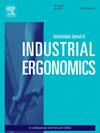设计整合在AEC教育中的预防:学科障碍与动机因素的实证评估
IF 3
2区 工程技术
Q2 ENGINEERING, INDUSTRIAL
International Journal of Industrial Ergonomics
Pub Date : 2025-10-03
DOI:10.1016/j.ergon.2025.103820
引用次数: 0
摘要
通过设计预防(PtD)通过将安全集成到早期设计阶段来降低风险,从而提高建筑生命周期的安全性。尽管PtD的重要性得到了认可,但它仍然没有充分融入建筑、工程和施工(AEC)教育。本研究考察了影响学生参与PtD的学科障碍和激励因素,这在以前没有文献记载。一项对178名AEC学生的调查显示,他们对PtD的总体熟悉程度较低(11 - 15%),不同学科之间在学习准备和偏好方面存在显著差异。建筑系学生表现出最低的工人安全意识(56.7%),并认为这对他们的设计角色不那么重要。工科学生表现出对工人安全责任的中等认识(77%),而建筑专业的学生尽管承认最高的责任(92%),但对正式的PtD教育表现出最少的热情。PtD挽救生命的潜力成为所有AEC学科的主要动力。次级动机因学科而异。建筑专业的学生更喜欢通过节省成本和提高进度效率等切实的结果来学习PtD,而建筑和工程专业的学生则更喜欢通过技术集成和职业提升来学习PtD。学生表现出对传统阅读和写作方法的厌恶,表明传统教学与学生偏好之间的不一致。学习偏好因学科而异。建筑学学生喜欢视觉学习策略,而工程和建筑专业的学生喜欢动觉学习方法。这些见解强调了对技术支持的、基于案例的学习策略的需求,这些策略可以利用学科激励因素,并与首选的学习方式保持一致。采用这些方法对于为未来的AEC专业人员提供必要的PtD能力和推进更安全的设计至关重要。本文章由计算机程序翻译,如有差异,请以英文原文为准。
Prevention through design integration in AEC education: Empirical assessment of discipline-specific barriers and motivational factors
Prevention through Design (PtD) mitigates risks by integrating safety into early design stages, thereby enhancing building lifecycle safety. Despite its recognized importance, PtD remains insufficiently integrated into Architecture, Engineering, and Construction (AEC) education. This study examines discipline-specific barriers and motivators influencing student engagement with PtD, which had not been documented previously. A survey of 178 AEC students revealed low overall familiarity with PtD (11–15 %) and significant differences among disciplines in learning readiness and preferences. Architecture students exhibited the lowest worker safety awareness (56.7 %) and considered it less central to their design roles. Engineering students demonstrated moderate recognition of their worker safety responsibilities (77 %), while construction students, despite acknowledging the highest responsibility (92 %), expressed the least enthusiasm for formal PtD education. PtD's life-saving potential emerged as the primary motivator across all AEC disciplines. Secondary motivators varied by discipline. Construction students preferred learning PtD through tangible outcomes such as cost savings and schedule efficiencies, while architecture and engineering students were motivated by technology integration and career enhancement. Students showed an aversion to traditional reading and writing approaches, indicating a misalignment between conventional instruction and student preferences. Learning preferences differed by discipline. Architecture students favored visual learning strategies, while engineering and construction students preferred kinesthetic methods. These insights highlight the need for technology-enabled, case-based learning strategies that leverage disciplinary motivators and align with preferred learning modalities. Adopting these approaches is critical for equipping future AEC professionals with essential PtD competencies and advancing safer design.
求助全文
通过发布文献求助,成功后即可免费获取论文全文。
去求助
来源期刊
CiteScore
6.40
自引率
12.90%
发文量
110
审稿时长
56 days
期刊介绍:
The journal publishes original contributions that add to our understanding of the role of humans in today systems and the interactions thereof with various system components. The journal typically covers the following areas: industrial and occupational ergonomics, design of systems, tools and equipment, human performance measurement and modeling, human productivity, humans in technologically complex systems, and safety. The focus of the articles includes basic theoretical advances, applications, case studies, new methodologies and procedures; and empirical studies.

 求助内容:
求助内容: 应助结果提醒方式:
应助结果提醒方式:


